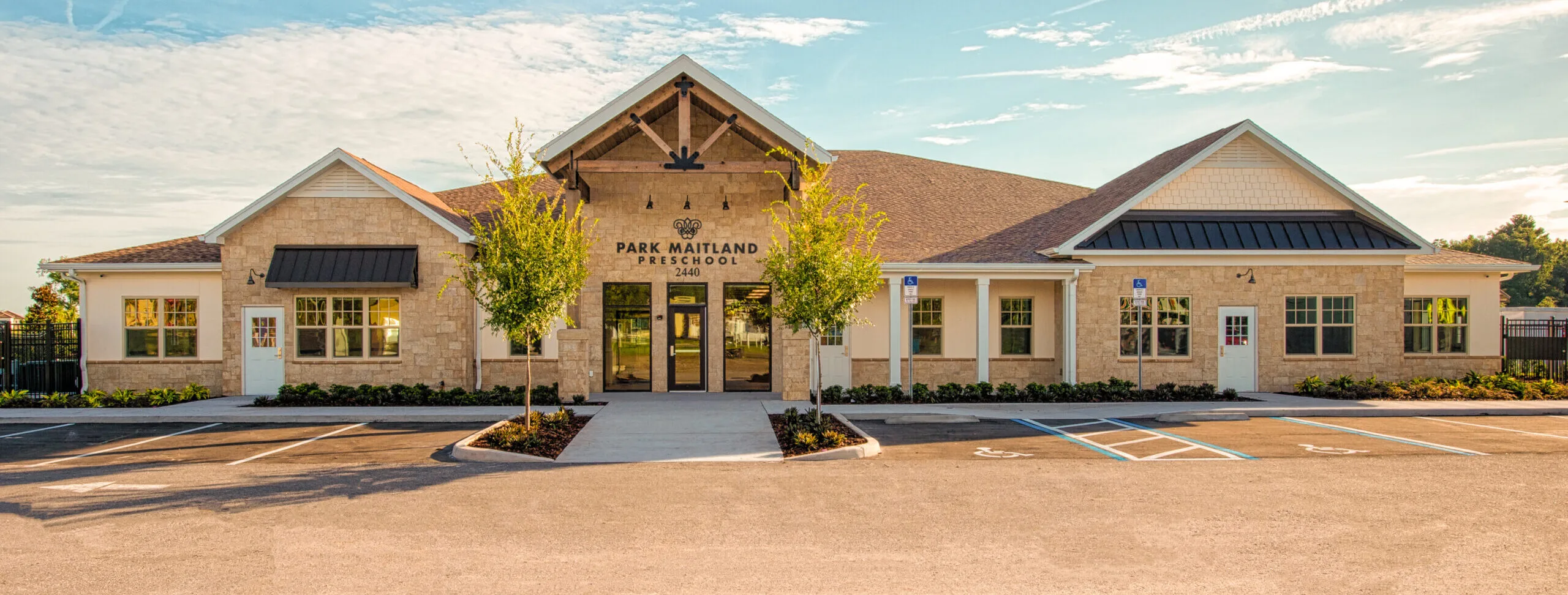How much money do daycare owners make?
The owner of a daycare center with 36 children enrolled can expect to earn $60,000-$100,000 annually in take home salary. Location and demand for services affect income, as with all professions. Those who run larger centers will typically make more money.
Are daycare centers a lucrative business?
There are over 750,000 daycare centers in the United States, and their expansion rate is anticipated to be 3.8% between 2020 and 2027. Daycare centers, also known as early learning centers, sound like profitable businesses. More entrepreneurs are interested in investing their money to open their own daycare centers due to the enduring need for these facilities. Before you start stacking up on apples and juice boxes, let’s see whether it’s worth it.
The earnings of a daycare proprietor are determined by the number of children they care for. If 36 children are enrolled at a daycare center, the proprietor can expect to make anywhere from $60,000 to $100,000 annually in take-home salary. A proprietor of a larger establishment will typically have a higher income than a proprietor of a smaller one.
Are you a daycare owner curious to know how much profit is possible?
Get never before seen state-by-state business income data showing how many daycare businesses make more than $1M in each state!
Click on the book photo to get a FREE Advanced Reader copy of this book!
Location and demand, of course, play a role in determining how much money an entrepreneur will make.
Location, size, and demand are some of the reasons for these numbers. Getting a business off the ground is complex, and maintaining it is no picnic either. Even though most initiatives have the potential to generate higher profit margins than average owners, keeping them is also a challenge. We will discuss some aspects of daycare centers that make them profitable here.

What Determines Profit?
It’s a mistake to think that every daycare facility will yield the same amount of money. There are endless variables that affect the profitability (or lack thereof) of a business.
Because of the numerous components that affect it, an establishment’s owner can customize a wide range of aspects of the enterprise, from the facility’s design to the snacks served for lunch. Here are some of the most significant ones (and their effects on owner’s wallets).
How can I create a monthly income template for my daycare?
Creating a monthly income template for your daycare involves documenting your expected monthly income based on the number of children enrolled and the average monthlcategy cost per child. You can list out the different age groups and the corresponding number of children in each group. Then, multiply the average monthly cost per child by the number of children in each group to calculate the projected income for that age group. Finally, sum up the income from all age groups to determine your total expected monthly income. This template will help you track and manage your daycare’s income on a monthly basis.
What are the key expenses to consider when creating a budget for a childcare center?
When creating a budget for a childcare center, it is important to consider various expenses such as utilities, classroom furniture, classroom supplies, advertising expenses, salaries for staff, and other operational costs. These expenses should be carefully accounted for to ensure that your budget is balanced and that you are not overspending.
How can I estimate my monthly and annual income based on the number of children in my daycare?
To estimate your monthly and annual income based on the number of children in your daycare, you can multiply the average monthly cost per child by the number of children in each age group. For example, if you have 30 toddlers in your daycare and the average monthly cost per toddler is $1,096, you can calculate that your daycare would make $32,880 per month ($1,096 x 30) and $394,560 per year ($32,880 x 12). Similarly, if you have 30 infants with an average monthly cost of $1,324, your monthly income would be $39,720 ($1,324 x 30) and your annual income would be $476,640 ($39,720 x 12).
What is the average monthly cost for center-based toddler and infant child care in the U.S.?
According to a 2021 report, the average monthly cost for center-based toddler child care in the U.S. is $1,096. On the other hand, the average monthly cost for center-based infant child care is estimated to be $1,324, which is about 21% more than the cost for toddlers.
How can I calculate my daycare’s monthly income?
To calculate your daycare’s monthly income, you need to consider the average monthly cost for center-based childcare in your area. For example, according to a 2021 report, the average monthly cost for center-based toddler child care in the U.S. is $1,096. If you have 30 toddlers enrolled in your daycare, you can multiply this average cost by the number of toddlers to estimate your monthly income. In this case, your daycare would make $32,880 per month ($1,096 x 30).

Categories of Daycare Centers
There are two main categories when comparing daycare centers: home-based and commercial. The size of the business is determined mainly by this factor, not by profits. Home-based centers have the highest profit margins.
Working from home.
Starting a daycare business at home is a great way to start with minimal overhead costs. These centers are often quite profitable because they have low operating costs and do not require additional workers.
These are limited in size to a small number of children that may be at a residence supervised by one or two individuals. With simplicity, there is a relatively small income ceiling.
As time passes, the business will grow, and the home will no longer be able to handle the extra children. When that happens, the daycare center will move into an actual physical structure, and the income ceiling will rise even higher.
A commercial center is daycare provided outside of a home environment.
Owners and their employees watch children at these early learning centers, which are commercial buidings. They usually consist of multiple rooms, such as dining rooms, indoor play areas, and fenced outdoor areas where playgrounds may be installed. They are usually more visually appealing to parents and more appropriate for children.
Additionally, maintaining a daycare facility without a physical location increases the number of kids that can be cared for but also boosts the expenses. Since you will need more workers, maintenance, materials, and potentially transportation to handle a large number of children, note that initial small childcare centers will suffer as they adjust to the larger daycare facility.
Owners must keep their business expenses in check at all times. Monitor spending and ensure it is in line with your company’s expenses as you fill it with children.
What are the most lucrative daycare centers?
The daycare field is no secret about making money; you must have customers who need and are ready to bring their children to an early learning center.
Daycare centers should be placed in areas that are densely populated. Customers will not travel a long distance every day to drop off their kids at daycare.
The facilities near prominent universities or in densely populated areas will have the most success in attracting customers, which will, in turn, create a profit.
In areas where schools and neighborhoods are far apart, daycare centers have a tough time making money. These locations have a cap on how much money they can attain.
Because there are fewer children to serve, it costs more to advertise and attract new customers. Most daycare centers are enrolled by families whose friends or family members refer them. When you have fewer families in your care, there will also be fewer of these referrals.
The most lucrative daycare centers are those with the highest tuition.
Daycare centers earn the highest profits by charging more for their services, apart from initially attracting clients. The cost of tuition is determined mainly by the cost of living in the area.
Daycare centers in areas with higher living costs charge their clients accordingly. Parents in these areas are willing to pay a little more for childcare and are more accepting of higher fees. Maintaining higher standards in these areas will be rewarding, of course.
Profit obstacles.
There are various issues that can cause problems for daycare business owners when they are focusing on generating continuous revenue. When making money, there must always be ongoing or growing cash flow.
Owners who anticipate events that might damage their company’s bottom line plan ahead to minimize the damage. Foresight and problem-solving are critical to preventing potential revenue losses. It is imperative that owners keep thinking forward. Here are a few examples of major potential issues and how they can be avoided.
Children don’t remain in daycare forever, usually for a year or two at the most. Therefore, it takes constant work to locate new clients. The more students enrolled, the better the chance of higher profits.
Successful childcare facilities constantly advertise and maintain their capacity full. Daycare centers frequently advertise in the media, at local gyms, and at grocery stores, among other locations. Working parents are likely to encounter advertisements in places where they will require early childcare services.
To get a handle on where you can squeeze more juice out of your Daycare lemon, create a balance sheet and analyze where your cost savings can occur.

How can I make a daycare balance sheet template for my daycare business?
To create a daycare balance sheet template for your daycare business, you have various options for software such as Google Sheets, Microsoft Excel, Microsoft Word, or Google Docs. It’s important to choose one that suits your familiarity and preference.
If you don’t have access to Google Sheets or Microsoft Excel, another alternative is using Microsoft Word or Google Docs. Both platforms offer basic spreadsheet functionality that can be used to create a balance sheet template. In this case, you can use tables or columns to organize your data effectively.
A balance sheet template is crucial as it provides insights into your daycare company’s financial position. It allows you to examine the total value of your assets, liabilities, and equity. Think of the balance sheet as a snapshot that captures your company’s current state. By referring to it, either you or any observer can understand your daycare’s financial standing at that particular reporting time.
Whether you choose Google Sheets, Microsoft Excel, Microsoft Word, or Google Docs, the key is to ensure that your balance sheet template is well-organized and includes all relevant financial information. Consider categories such as cash, accounts receivable, fixed assets, accounts payable, accrued expenses, and owner’s equity. Remember to update your balance sheet regularly to accurately reflect the financial health of your daycare business.
Turnover in a daycare center is a necessary evil.
Employees don’t earn much in a daycare center. Sick time is often the only benefit they receive. Health insurance and retirement plans are frequently absent due to low wages. Generally, employees don’t stay for long periods because of the low pay. Those employees are working for experience and passion because they attend school or work.
The state ensures that child care and early learning center maintain the appropriate standards. In order to keep their facilities in compliance, owners must keep careful track of how the standards are shifting. These standards are revised on a regular basis, and as a profitable daycare operator, you must keep track of them.
If a facility violates a code, the business will be shut down until it is corrected. The doors will be closed and locked if a company is not profitable.
It’s still (and will always be) an issue to get customers to pay. Daycare is a considerable expense for any family, regardless of the rate. Typically, families will spend between 10% and 15% annually on childcare. The majority of daycares charge weekly or monthly. This means that someone is often responsible for collecting payments.
Ninety percent of daycare owners say that this is one of the most challenging aspects of running a daycare. This is one of the more stressful aspects of the job. Sometimes owners make arrangements with parents to pay at a later time, and this does not always work out well for the investment. Furthermore, daycare centers in lower-income areas experience the issue tenfold more than those in higher-income areas.
Daycare is becoming more popular!
More families have been utilizing daycare centers in recent years, and the field is gaining in popularity. The surge in clients is due to the fact that there have been more family members using daycare centers in recent years.
Because both parents choose to work to provide for their families, daycare costs have risen. In other words, there will be more children who need daycare in the future, and the cost will rise in tandem.

High cost of living = High wages = High tuition
It is possible to see the trend by looking at cost by state, just as the cost of living in the area influences the cost of childcare services. Washington D.C. daycare centers charge the highest rates, followed by California, Oregon, and New York, even though the state is not a state.
North Dakota, Utah, and Delaware are states where daycare centers charge the least. It’s not necessarily the case that prospective business owners will want to move to a different state to open their business, but it’s definitely worth considering if they are seeking profits.
What considerations should be made to ensure prices allow the center to stay profitable?
To ensure that prices allow the childcare center to stay profitable, it is crucial to carefully consider all financial costs and revenue factors. Apart from the costs mentioned earlier, factors such as enrollment projections, occupancy rates, and operating hours should be taken into account. Regular financial analysis and tracking of expenses are necessary to control costs effectively and prevent wastage. Additionally, it is important to regularly review and compare tuition fees against competitors to ensure they are in line with the market without compromising the center’s profitability.
How can higher tuition fees be justified to parents?
Justifying higher tuition fees to parents requires clear communication and showcasing the added benefits that the center provides compared to others. It is important to explain why the fees are higher, such as the quality of staff, educational programs, safety measures, or additional services offered. By highlighting the value and advantages that come with the higher fees, parents can understand and appreciate the investment they are making in their child’s care and development.
Why is it important to gauge what competitors in the area are charging?
Gauging what competitors in the area are charging is important for several reasons. Firstly, it helps in determining whether the tuition fees being set are competitive and in line with the market. Parents often compare prices when choosing a childcare center, so it is crucial to ensure that the fees charged are fair and reasonable compared to other centers in the vicinity. Additionally, understanding competitor pricing provides insights into the local market dynamics and helps in positioning the center’s offerings effectively.
How does the number of children being cared for impact tuition fees?
The number of children being cared for directly affects the revenue and profitability of a childcare center. More children mean more revenue, while fewer children may lead to financial challenges. Therefore, it is essential to consider the number of children the center will be caring for when setting tuition fees, ensuring that the fees will cover all the expenses associated with providing quality care.
What financial costs should be considered when setting tuition fees?
When setting tuition fees for a childcare center, it is important to consider various financial costs. These include salaries of staff members, utilities such as electricity and water, rent payments for the facility, supplies needed for the center’s operations, advertising costs to attract parents, and other operational expenses that contribute to the smooth functioning of the center.
How much does it cost to start?
A savvy investor must consider how much time it will take to recoup their initial investment when deciding how much to spend on starting a daycare business. It is a relatively simple business to get off the ground, but it will cost between $10,000 and $50,000, or even more, depending on size.
The larger the investment, the longer it will take to recoup your initial investment. Incentives and grants are available in most states to assist with the initial costs of opening an early learning center. Don’t leave money on the table by ignoring these opportunities.
Owners must keep an eye on money and everything it encompasses to be successful and profitable. Rates should regularly be checked against the competition to ensure they are in line with it. Expenses must be tracked and controlled to prevent money from being wasted. Supply prices should be checked often, as daycares should strive for the best deals to maximize revenue. Managing a business should not be taken lightly, as rates and costs may change daily.
What should you do now that you’ve opened your daycare?
Now that you’ve successfully opened your daycare, there are a few key steps you should take to ensure the smooth operation and financial stability of your business. One of the most crucial tasks is to create a sample operating budget. This budget will help you anticipate and plan for your business expenses, allowing you to stay organized and avoid overspending.
To begin creating your sample operating budget, start by estimating the monthly costs for each expense item. Consider factors such as rent or mortgage payments for your daycare facility, utilities, staff salaries, insurance, and any necessary licenses or permits. It’s important to be thorough and realistic in your estimations, as this will give you a clear understanding of your ongoing financial obligations.
Next, take into account the number of children enrolled in your daycare. Let’s say, for example, you currently have around 60 children enrolled, while your full capacity is 80 children. This information will help you calculate the appropriate amount of resources needed to serve these children, such as food, supplies, and educational materials.
Additionally, consider the number of operating days in a year. Assuming your daycare operates Monday through Friday, it will be closed on weekends and major public and national holidays such as Veteran’s Day, Thanksgiving, Christmas, Martin Luther King Jr. Day, and President’s Day. This means you’ll be open for a total of around 254 days a year.
By factoring in all these elements, you can develop a comprehensive sample operating budget. This budget will not only allow you to predict and manage your monthly expenses effectively but also provide an opportunity to identify potential areas for extra income generation or cost-cutting measures. Striving to ensure that your expenses do not exceed your monthly revenue will contribute to the financial success of your daycare.
Remember, creating a sample operating budget is an ongoing process. As your daycare grows and evolves, you may need to make adjustments to your budget to accurately reflect any changes in expenses or revenue. Regularly reviewing and updating your budget will help you stay financially proactive and ensure the continued success of your daycare.
If you love what you do, you’ll never work a day in your life.
The excellent information for anyone thinking about establishing their own early learning center is that there is a lot of business and numbers involved. However, it should be noted that the majority of people enter the profession because of their passion.
If investing in children and developing youth is not one of your greatest passions, then consider investing in something else.
Investing in a daycare center can be a financially lucrative venture, but money is not usually the primary motivator for people who enter the business. Instead, people who are passionate about children and derive satisfaction from caring for them will have the advantage of building a thriving daycare center.
What makes daycare centers most profitable?
Efficiency. Be efficient, but don’t compromise quality or child safety.
Don’t rush things; rather, proceed slowly and methodically. Become comfortable managing expenditures and maintaining capacity bit by bit as you grow.
Being careful and putting in a little extra effort are two ways you can be heavily rewarded in this line of work. By following the rules, you’ll save time, money, and stress as a result.
-This article was written by Rebecca Calbert.
Rebecca is a licensed architect with over 30 years of experience. She owns and operates an architectural firm, Calbert Design Group, and educates her clients through the commercial real estate development process with online content at SaveOnBuilding.com. Rebecca’s “purpose” is to educate small business owners and protect them from what they don’t know.


